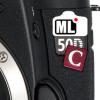
pietz
-
Posts
136 -
Joined
-
Last visited
Reputation Activity
-
 pietz got a reaction from IronFilm in Sony a6300 4k
pietz got a reaction from IronFilm in Sony a6300 4k
the last time i was this impressed was when the a7rII came out.
The autofocus of the a6000 was the first and only one i would actually consider using as a videographer and the a6300 seems to be even better.
just wow
-
 pietz got a reaction from TheRenaissanceMan in Sony A7S II is out!
pietz got a reaction from TheRenaissanceMan in Sony A7S II is out!
@Emanuel
Sorry mate, i can't answer your two questions as I'm not an engineer. I just know that things move forward and overheating might soon be a problem of the past, as sensors get more efficient. Your entire post sounds like you are arguing that 10bit will not be available in the future of semi professional cameras. well, you might be right and i never said anything against that.
My post covered two things: A) it was stupid of you to blame 4:2:0 for the banding in the mentioned example. B) in my opinion 10bit is much more important than 4:2:2 for already stated reasons. i never argued about availability of 10bit in the future and i do hope you didnt refer to me when talking about "Whining".
Now comes a part thats not obvious at all and i don't blame you for being wrong again: 10bit h264 footage will be smaller and less cpu heavy compared to 8bit footage, thus also helping overheating. "WHAAAAAT, you're completely insane pietz". Thats a fair reaction. See, because most of the cameras we talk about can output uncompressed 10bit footage over hdmi, its easy to assume that its actually recorded that way. For saving it inside an 8bit h264 file it needs to be down sampled to 8bit before its actually being encoded. thats cpu heavy and skipping this step might actually result in less heat. it also results in smaller files because a higher bit depth and therefore higher color accuracy results in less truncations errors in the motion compensation stage of the encoding. this increases efficiency because theres less need to quantize. I apologize, as you successfully stepped into my trap of making this point.
It sounds like magic, but its Science bitch!
btw dont take my word for it: http://x264.nl/x264/10bit_02-ateme-why_does_10bit_save_bandwidth.pdf
-
 pietz got a reaction from Gadhai in Sony A7S II is out!
pietz got a reaction from Gadhai in Sony A7S II is out!
I believe that the jump from 8bit to 10bit is far more important than 4:2:2 instead of 4:2:0. The bump to 4:2:2 increases the theoretical gain of picture information by 1,3x, whereas 10bit increases it by 64x more information. The A-B-C example that Emanuel posted doesn't prove the opposite for quite a few reasons:
1. When testing the impact of a certain change or setting you can only vary one factor to make assumptions regarding that setting. But as it has been pointed out it not only changed from 8bit 4:2:0 to 8bit 4:2:2, but the entire system that recorded the scene changed including the codec thats being used. thats a massive flaw in the test and therefore doesn't prove anything regarding 4:2:0 vs 4:2:2.
2. Better color subsampling only increases accuracy of chroma information meaning that a black and white picture looks identical in 4:2:0 vs 4:2:2. The ABC example still shows banding even when converted to black and white, meaning the banding isn't caused by the color subsampling.
3. if 4:2:0 were to blame for the banding in the picture then the 4:2:2 example would show the same kind of banding on the horizontal line of the vignette circle. why? well, because 4:2:2 and 4:2:0 have the exact same amount of information on any horizontal line of pixels. its only the vertical chroma resolution thats improved.
Quite opposite to Emanuels opinion I think people are way to focused on 4:2:2. Its really just a leftover from interlaced footage times that only increases new picture information by a tiny bit. if something bothers you about 4:2:0 it should also bother you while looking at horizontal lines from 4:2:2 footage as it has the same chroma resolution. 10bit on the other hand is HUGE. companies went from 10bit raw to 12bit raw to 14bit raw and its still going. Now, in my personal opinion we have reached what makes sense in that matter and everything above is just marketing, but since 8bit is the lowest amount of color we need to not see any banding, it makes A LOT of sense to go at least one step higher to have a little bit of room for grading. 8bit only accounts for 0,02% of all the color that 12bit includes and if people don't even think thats enough, we might see a bunch of reasons to upgrade to 10bit.
-
 pietz got a reaction from TheRenaissanceMan in Sony A7S II is out!
pietz got a reaction from TheRenaissanceMan in Sony A7S II is out!
I believe that the jump from 8bit to 10bit is far more important than 4:2:2 instead of 4:2:0. The bump to 4:2:2 increases the theoretical gain of picture information by 1,3x, whereas 10bit increases it by 64x more information. The A-B-C example that Emanuel posted doesn't prove the opposite for quite a few reasons:
1. When testing the impact of a certain change or setting you can only vary one factor to make assumptions regarding that setting. But as it has been pointed out it not only changed from 8bit 4:2:0 to 8bit 4:2:2, but the entire system that recorded the scene changed including the codec thats being used. thats a massive flaw in the test and therefore doesn't prove anything regarding 4:2:0 vs 4:2:2.
2. Better color subsampling only increases accuracy of chroma information meaning that a black and white picture looks identical in 4:2:0 vs 4:2:2. The ABC example still shows banding even when converted to black and white, meaning the banding isn't caused by the color subsampling.
3. if 4:2:0 were to blame for the banding in the picture then the 4:2:2 example would show the same kind of banding on the horizontal line of the vignette circle. why? well, because 4:2:2 and 4:2:0 have the exact same amount of information on any horizontal line of pixels. its only the vertical chroma resolution thats improved.
Quite opposite to Emanuels opinion I think people are way to focused on 4:2:2. Its really just a leftover from interlaced footage times that only increases new picture information by a tiny bit. if something bothers you about 4:2:0 it should also bother you while looking at horizontal lines from 4:2:2 footage as it has the same chroma resolution. 10bit on the other hand is HUGE. companies went from 10bit raw to 12bit raw to 14bit raw and its still going. Now, in my personal opinion we have reached what makes sense in that matter and everything above is just marketing, but since 8bit is the lowest amount of color we need to not see any banding, it makes A LOT of sense to go at least one step higher to have a little bit of room for grading. 8bit only accounts for 0,02% of all the color that 12bit includes and if people don't even think thats enough, we might see a bunch of reasons to upgrade to 10bit.
-
 pietz got a reaction from Liam in Sony has gone internal-4K crazy: A7RII, RX1004, RX10II
pietz got a reaction from Liam in Sony has gone internal-4K crazy: A7RII, RX1004, RX10II
and im 70% sure the both of you don't understand how percentage works.
-
 pietz got a reaction from Don Kotlos in Sony has gone internal-4K crazy: A7RII, RX1004, RX10II
pietz got a reaction from Don Kotlos in Sony has gone internal-4K crazy: A7RII, RX1004, RX10II
ive been saying this for years and always get weird looks all over the place, but the relationship of Sony and Panasonic is strikingly similar to RED and ARRI. One tries to innovate wherever they can, which always looks great on paper. the other focuses on complete reliability and only uses what works 100%.
If moire isnt a huge deal on the a7r II there is another benefit opposed to the A7s. native iso at 3200 is annoying as f*ck and while its awesome to have nightvision in our camera, we wont need it more then 2% of the time. Shooting in bright daylight and having to use iso 3200 happens a whole lot more often. using variable NDs with these settings is almost impossible because all of them suck at high ND values. and fixed NDs are just as annoying. native iso at probably 800 is a lot better to deal with if you want use S-Log
-
 pietz got a reaction from Julian in Sony has gone internal-4K crazy: A7RII, RX1004, RX10II
pietz got a reaction from Julian in Sony has gone internal-4K crazy: A7RII, RX1004, RX10II
ive been saying this for years and always get weird looks all over the place, but the relationship of Sony and Panasonic is strikingly similar to RED and ARRI. One tries to innovate wherever they can, which always looks great on paper. the other focuses on complete reliability and only uses what works 100%.
If moire isnt a huge deal on the a7r II there is another benefit opposed to the A7s. native iso at 3200 is annoying as f*ck and while its awesome to have nightvision in our camera, we wont need it more then 2% of the time. Shooting in bright daylight and having to use iso 3200 happens a whole lot more often. using variable NDs with these settings is almost impossible because all of them suck at high ND values. and fixed NDs are just as annoying. native iso at probably 800 is a lot better to deal with if you want use S-Log
-
 pietz got a reaction from sanveer in Sony has gone internal-4K crazy: A7RII, RX1004, RX10II
pietz got a reaction from sanveer in Sony has gone internal-4K crazy: A7RII, RX1004, RX10II
i disagree with those saying that "especially now Panasonic needs to deliver V-Log for the GH4". We're lucky that the update is rumored to drop very soon, because if anything Panasonic needs us to buy their next camera. And thats not going to happen if the GH4 takes away another aspect that the GH5 could show off.
They will only make us buy their next product if they amaze us. V-Log is definitely the first thing on my list, closely followed by 10bit. the latter got even more important now that the A7r II doesnt have it. Personally i never cared for 4:2:2 and dont see why this is such a big deal to some, but 10bit prores or cineform would be a great start. Since the announcement of the A7r II IBIS is also a must now. this will mess up Panasonics entire lens line up with OIS but thats a shot they have to take. Lastly a 4k multi aspect sensor to come as close as possible to a larger sensor format. since this results in a 12MP senor this will also help in low light.The problem with sensors is that there are not so many great ones out there and you have to take what you get.
But if we're honest: Panasonic is done, they wont have a market after this camera drops and after the A7s II even less. those Samyang lenses are still a lot cheaper than MFT glass surprisingly enough so for filmmakers the cost of lenses isnt even a downside with the A7 series. oh man Pana, you gotta strike hard and start delivering RELEVANT firmware updates frequently. id love to work for them in hard times like these.
-
 pietz got a reaction from Julian in Panasonic GH4 firmware update V2.2 due to be released April 22nd
pietz got a reaction from Julian in Panasonic GH4 firmware update V2.2 due to be released April 22nd
this doesnt sound like something that panasonic would do. i hope. however the wording sounds very solid and not like "the gh5 will have ibis!!1 yolo" -trash rumors.
i would most definitely switch system if its a paid update. even if its just a few bucks. the competition is extremely high these days, with lots of other companies to switch to. Panasonic has never been "great" about firmware updates (not terrible either) and going this route would make me sell my gh4 immediately and get a NX1. (im on the edge anyway) this kind of marketing and selling scheme disgusts me. Panasonic said themselves that the feedback and sales on the gh4 are way better than expected. why not give a little bit back to the users, as an action of good faith? that way theyd be building trust for future cameras, which is something the need badly. lets face it, we all know that the NX2 will be better than the GH5, so trust, believe and good faith is something they should be aiming at. i have trouble understanding, why so many companies dont get that.
but until its official ill be leaning back and sipping ice tea
-
 pietz got a reaction from IronFilm in Panasonic GH4 firmware update V2.2 due to be released April 22nd
pietz got a reaction from IronFilm in Panasonic GH4 firmware update V2.2 due to be released April 22nd
this doesnt sound like something that panasonic would do. i hope. however the wording sounds very solid and not like "the gh5 will have ibis!!1 yolo" -trash rumors.
i would most definitely switch system if its a paid update. even if its just a few bucks. the competition is extremely high these days, with lots of other companies to switch to. Panasonic has never been "great" about firmware updates (not terrible either) and going this route would make me sell my gh4 immediately and get a NX1. (im on the edge anyway) this kind of marketing and selling scheme disgusts me. Panasonic said themselves that the feedback and sales on the gh4 are way better than expected. why not give a little bit back to the users, as an action of good faith? that way theyd be building trust for future cameras, which is something the need badly. lets face it, we all know that the NX2 will be better than the GH5, so trust, believe and good faith is something they should be aiming at. i have trouble understanding, why so many companies dont get that.
but until its official ill be leaning back and sipping ice tea
-
 pietz got a reaction from sandro in Photokina report day 1 - the Samsung NX1 (4K mirrorless camera with H.265)
pietz got a reaction from sandro in Photokina report day 1 - the Samsung NX1 (4K mirrorless camera with H.265)
H.264 supports 10Bit as well and yet we dont see it around. Just because its compatible with the Codec doesnt mean companies will actually use it. just saying.
And some people seem to forget about the fact that H.265 is not much more efficient than H.264. But for this sentence to be true, you need to understand what efficiency means. its not only the final filesize, but also the computing power it takes to encode and decode the video.
H.265 simply opens many doors of compressing files much more for the cost of much higher computing power. A camera like the NX1 wont have "that" computing power to take the real advantage of H.265. i personally would guess their 80mbit/s H.265 video to be around the same as the GH4's 100mbit/s H.264. You also need to understand that H.264 isnt all the same, even when using the same encoder. You can choose between different presets that differ in encoding speed and file size results. Cameras need at least the speed of doing the conversion in realtime, so when you put a faster processor in a new camera you can make the encoding of the video look better by using a slower preset. An H.264 camera from 8 years ago will be deliver a lot less quality at the same bitrate as a camera from today. people seem to forget this and just hype H.265.
It will be pretty awesome but big computers are just getting the power it takes to edit H.265. for cameras it will take another year to actually benefit from it.
-
 pietz got a reaction from Inazuma in A GH4 in your pocket - Panasonic LX100 with 4K and Micro Four Thirds sensor
pietz got a reaction from Inazuma in A GH4 in your pocket - Panasonic LX100 with 4K and Micro Four Thirds sensor
let me get this straight.
this camera costs $900 and has a 11-34mm f1.7-2.8 lens on it and a m43 sensor. so why the f is the 12-35mm f2.8 so expensive?!
The LX100 seems to have a better lens and yet its less expensive than the 12-35mm alone?!?
i always called this lens completely overpriced, but now Panasonic is just making fun of themselves! rediculous.
-
 pietz got a reaction from Edward Zaee in New OK Go music video shot on Panasonic GH4
pietz got a reaction from Edward Zaee in New OK Go music video shot on Panasonic GH4
well they should have used a camera with global shutter because that video just gave me eye cancer. terribly stabilzed shots, blurred frames, warping effect, video-ish looks...
dont get me wrong i love their videos because they are lots of fun to watch, but the video quality is absolutely nothing to be proud of.
-
 pietz got a reaction from abmbarry in The EOSHD Panasonic GH4 Shooter's Guide - Now Available
pietz got a reaction from abmbarry in The EOSHD Panasonic GH4 Shooter's Guide - Now Available
Preferences -> General -> Default Scale to Frame Size. Tick this option and youre good to go.
however there is one thing that you need to know: when this box is ticked and you take a 4k clip and drag it into a 1080p timeline, the clip will be zoomed out to fit the frame as you want BUT this is now referred to as 100% scale size. that is not a problem just something to work with. if you now want to zoom in native resolution of one of your clips you have to change the scale to 200%.
-
 pietz got a reaction from Christina Ava in How to cure banding in DSLR footage (and GH4 4K holds the key...)
pietz got a reaction from Christina Ava in How to cure banding in DSLR footage (and GH4 4K holds the key...)
awesome, thanks andrew!
regarding Premiere: i just love it. not having to render anything in after effects because i can just drop the ae project in the premiere timeline is just a killer feature. i tried fcpx for a while, but i couldnt get used to it. and i think i never will as it seems to be for people who edit something from the left to the right. i on the other hand drop the footage in different places and fill the gaps that are left. with this workflow using fcpx feels like i have to workaround everything i do. i just cant wrap my mind around why i cant just import a second video layer and move the footage freely. i dont want to connect this clip to any other clip. its so weird to me...
-
 pietz got a reaction from AaronChicago in How to cure banding in DSLR footage (and GH4 4K holds the key...)
pietz got a reaction from AaronChicago in How to cure banding in DSLR footage (and GH4 4K holds the key...)
awesome, thanks andrew!
regarding Premiere: i just love it. not having to render anything in after effects because i can just drop the ae project in the premiere timeline is just a killer feature. i tried fcpx for a while, but i couldnt get used to it. and i think i never will as it seems to be for people who edit something from the left to the right. i on the other hand drop the footage in different places and fill the gaps that are left. with this workflow using fcpx feels like i have to workaround everything i do. i just cant wrap my mind around why i cant just import a second video layer and move the footage freely. i dont want to connect this clip to any other clip. its so weird to me...
-
 pietz got a reaction from Julian in Panasonic GH4 live event at B&H today and review coming soon!
pietz got a reaction from Julian in Panasonic GH4 live event at B&H today and review coming soon!
may we use this thread for live discussion of what they are saying on BHP Live?
EDIT: wow, i like this panasonic dude. honest guy.
EDIT2: Answer to why the GH4 doesnt have IBIS:
it was built for professional video production. having the sensor move around inside the body without a heat sink, wouldnt be a reliable choice for filming longer periods.
EDIT3: Answer to the audio problem with external microphones:
Panasonic engineers are looking into it. it might come because of the 3,5mm audio pin. the issue doesnt appear with the shotgun mic made by panasonic. others have to be tested.
EDIT4: Best detail and dynamic range at ISO200
EDIT5: Higher DR in 4k compared to 1080p with at least 11 stops
-
 pietz got a reaction from dafreaking in GH4: List of quirks and problems
pietz got a reaction from dafreaking in GH4: List of quirks and problems
Andrew, i just sometime feel like youre selling your opinions as facts, which i dont agree with nor like. your tests are perfectly objective and i love your page for that. but saying that its "madness" not to use the gh4 in 4k or declining that it doesnt come "at many costs", is not true. whats true is, that these draw backs are so little to YOU, you dont mind them, and that is absolutely fine. but its just not true for everybody, like it sounds like in your answer to my post.
obviously the 4k image of the GH4 is absolutely lovely and i can understand everybody using it exclusively for everything they do. but i for example shoot weddings and like to record everything with at least 50frames to have a dreamy slowmo when i need it. my G6s 50fps is soft, i hate it. having a crisp 62fps on the new gh4 is a real advantage for me. next, i shoot on cruise ships that often vibrate due to the engine. with even worse rolling shutter in 4k the footage will look terrible, having 50% less rolling shutter in 1080p is another huge advantage for me. that also applies when i have to stabilize shots in post. these things sum up in my personal use cases, which is why id rather use this camera in 1080p 62fps than in 4k. this goes against anything you believe in, but only because you re putting your focus on different features than i am :)
what im saying is: the way it works right now the 4k is not a selling point for ME. the gh4 comes with other great features that are good to have, but especially on the auto focus (in video), i expected some better. i understand your opinion thinking "pietz, its the first camera that shoots seriously impressive 4k material and it even costs below $2k. how can you complain about this camera?" but if 4k isnt a selling point for me, im not left with so many other improvements in the gh4. and not having auto focus in VFM at all is just rediculous in my oppinion.
-
 pietz got a reaction from etidona in GH4: List of quirks and problems
pietz got a reaction from etidona in GH4: List of quirks and problems
Hello everybody,
i wanted to collect all the things where the GH4 doesnt quite work as it should. Those can be bugs, problems or things that are just worse when compared to the GH3. bugs or problems are something that need to be fixed and since panasonic seems to read around this forum, it might shorten the time to do so. quirks are negative aspects about this camera, that people need to know before buying it, since these things are not advertised:
-Very soft video in variable framerate mode: 1080p 96fps footage looks more like 720p which has been upscaled than actual full hd footage.
-No auto focus in slow motion mode: when recording 96fps the auto focus is not available, which is understandable on my end. but its also not available when you havent even started recording, which is just weird. so once you set it to 96fps, you have to focus manually.
-Slow auto focus in video: its hard to detemine a definiton for "slow" in this regard but since its slower than the GH3 it cant be working properly. it should be faster, due to the new auto focus system used or at least the same than the GH3.
-Crop on 4k video: recording in 4k will give you a crop factor of 2.3 instead of 2.
-Rolling shutter is worse in 4k: rolling shutter is worse when you are filming in 4k compared to 1080p, which makes sense. but its also worse than 1080p on the GH3. i thought the sensor read out was supposed to me much faster on the GH4.
anything else? i heard there was some audio issue with humming when not in manual video mode. is that correct? please let me know other things i forgot or didnt know.
-
 pietz got a reaction from pablogrollan in GH4: List of quirks and problems
pietz got a reaction from pablogrollan in GH4: List of quirks and problems
i dont understand those people who go all "fanboy" on my idea. is the gh4 a great camera? yes. is it a good bang for the buck? absolutely. is it perfect? obviously not.
since its a new camera i thought it would only be fair to talk about things people should know before buying this camera. if you would only get it for the 96fps mode and then notice that its quite soft and auto focus doesnt work, youd be disappointed, correct?
im just here to list facts and information, if you feel you have to defend the gh4 for being super cool and i'm just a bad person for even talking about these things, i think youre being subjective and need to grow up.
anyway i did a quick screenshot comparison between 1080p 96fps off the camera and downscaling it to 720 and then upscaling it back to 1080p.
http://screenshotcomparison.com/comparison/74686
as you can see there is more information in the 1080p picture. that means although the 1080p 96fps picture might be a little soft, it retains more information than a 720p picture.
id love to see a comparison like this between the GH3 and GH4 both in 1080p mode regarding sharpness and rolling shutter :) if anyone has the possibility to do this test, id highly appreciate it.
-
 pietz got a reaction from Julian in GH4 100 mb/s better than 200 mb/s??
pietz got a reaction from Julian in GH4 100 mb/s better than 200 mb/s??
im not surprised by this result at all. it would have been my first guess that 100mbps ipb is better than 200mbps all i on the GH4 and any other camera to begin with. especially in a comparison like the one you made. let me explain:
most of you know what i, p and b frames are and how they work, so i wont get into it. for the 200mbps option to be better in image quality than the 100mbps one, all B and P frames from the lower setting need to be larger (in file size) than half the size of an i frame. lets talk numbers: an i frame in the 200mbps is pretty much exactly 1MB in file size, that means the b and p frames from the 100mbps setting need to be between 500kB and 1MB, so the 200mbps option is superior in picture quality. but thats just rarely the case. b and p frames are usually smaller than half the size of an i frame.
in an example like yours with a locked camera the b and p frames will probably around 10 to 20% the size of an i frame, because you have very little change from one frame to the other. if the camera uses 100% of its available bandwidth, which my theory is based upon, the 100mbps will bring you much better quality, because the i frames in the 100mbps setting are "allowed" to be larger than in the 200mbps option.
the only advantage of shooting only i frames is that your computer has to work and calculate less. meaning it works better and its response is faster. if however youre on a very fast machine anyway, theres not a legitimate reason to use 200mbps all i.
-
 pietz got a reaction from Chrad in Why I am going with 4K and why you should too
pietz got a reaction from Chrad in Why I am going with 4K and why you should too
more information has always been the future of things. being it more color depth, higher resolution, higher framerates or less aggresive codecs. everybody should decide for themselves what makes the most sense to upgrade first. this also depends on what youre producing for.
somebody making internet films doesnt have big advantages from mastering in 4k, because most of the people dont even watch the films in 1080p full screen. in a youtube-sized videoplayer (not fullscreen) 1080p video looks razor sharp either way, why not upgrade something else first that makes more sense in this context, like dynamic range
And i have to absolutely disagree with Andrew saying that "4K means more Dynamic Range", as there is no technological aspect proving this, since its only a Resolution-based standard. The fact that those cameras who offer 4k right now have higher dynamic range than the average 1080p cam is a totally different story.
see for yourself what makes most sense to upgrade first. i would much rather have a 10bit 1080p picture than a 8bit 4k picture as of right now...
-
 pietz got a reaction from tokyojerry in New H.265 codec on test - ProRes 4444 quality for 1% of the file size
pietz got a reaction from tokyojerry in New H.265 codec on test - ProRes 4444 quality for 1% of the file size
as of right now h265 doesnt make much sense to use for professional work. you use codecs like this one and like h264 to get the best quality/size ratio. this makes sense for your final version you want to share with people. well, sharing something that almost nobody can play isnt really helping is it?
im really looking forward to x265 and when h265 enters the scene. but for now stick with h264 when sharing videos.
its not rocketscience. on a mac use handbrake with the quality option enabled. most people still use bitrate. why? you should only use bitrate if you directly want to control the size of your video file, but most often you dont care about the exacty size. you want it to look good. i hate people saying that they just use a bitrate of 4000 for 720p. it always looks good. fact is, for a concert video or a sporting event 4000 might be not enough for reasonsable quality. for a locked shot or timelapse 4000 might be overkill. its not that easy to determine. just go with the quality option if thats what you care about.
crf24 = youtube quality, crf22 = good quality, crf20 = very good quality, crf18 = to go all out.
i wouldnt recommend using lower crf values than 18. you cant see the difference. i have a eye for detail and most often can see a difference between 20 and 18. so using crf18 already gives you a nice safety bump, if you might wanna use the file to create other formats out of it.
on windows use staxrip. its one of the few reasons i still miss windows. its the best encoding software for h264 by a long shot. handbrake works well but the interface is illogocally structured.
-
 pietz got a reaction from andy lee in G6 vs GH3 vs D5200 vs ?
pietz got a reaction from andy lee in G6 vs GH3 vs D5200 vs ?
sometimes i feel like andy lee's 2nd forum account, but i guess i just agree with him on this. btw im excluding the d5200, dont know much about it. just GH3 vs G6.
lets assume they would go for the same price. wow, that would be tough. high bitrate on one side, focus peaking on the other...well you seem to know the specs so lets cut to my point. even if these cameras had the same price tag im 70% sure that i would go for the G6, but that greatly depends whats important to you. set your priorities.
but in the end the G6 is half the price of the GH3, and thats why its a no brainer. the only thing im sad about is that it doesnt come with a weather sealed body :( but except that...i dont need that high bitrate. i mean why do we all just talk about bitrates. the video quality of the G6 is absolutely great out of the box. why produce video files 3 times of that size. certainly not for editing. my hackintosh with premiere pro eats any native h264 files like nothing. i dont need all-i for that.
but you came to the point where you said, what if you have the money to get a GH3? well then you should buy lenses for that money. beautiful voigtlander and slr magic lenses, my friend.
The G6 is the real successor of the GH2. simple as that. i hated my GH2 for the high level of noise - all gone with the G6, better view finder, better display, better touchscreen, some nice gimmicks, focus peaking. im not saying that the GH3 is not a great camera, but it didnt quite fit in the GH-family-tree because they changed soo many things about it. some of which arent improvements...
oh and the G6's footage looks more cinematic when you turn off sharpening to -5. the sharpening does a nice job, but it also sharpens the areas that are slighty out of focus, which gives it more of a small-sensor-kinda-look.
-
 pietz got a reaction from jgharding in Super-Takumar Lenses
pietz got a reaction from jgharding in Super-Takumar Lenses
what do think of the variety of Super-Takumar lenses?
many of them can be bought through ebay for a very low price, like the 50mm/f1.4 for under $100. i already read a few great reviews on them from photographers, so i wanted to know if any cinematographers had any experience with them.
thanks













